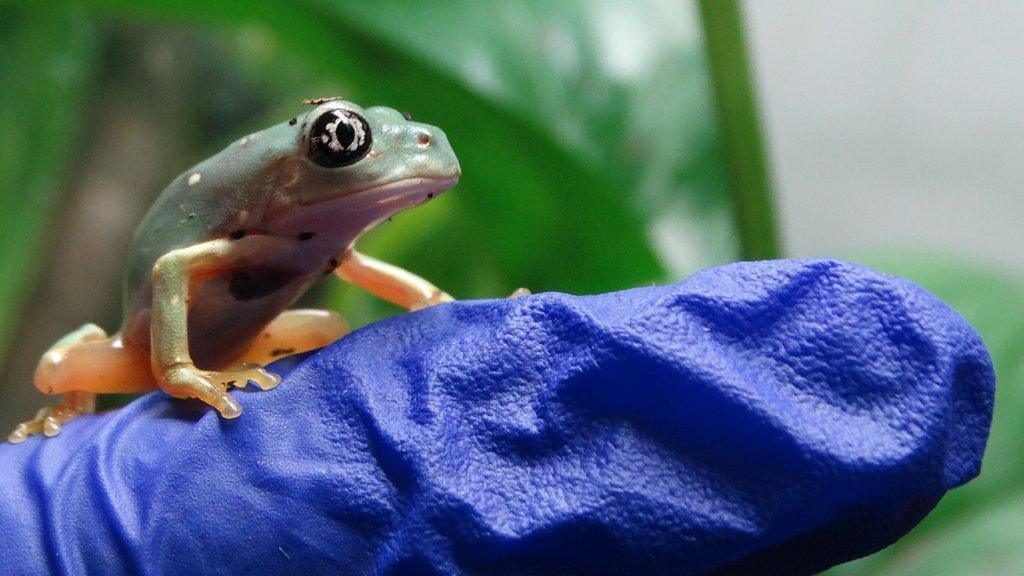Rare Mexican giant leaf frogs successfully bred in UK
- Published
- comments

Amphibians are the most threatened group of vertebrates on the planet
Rare giant Mexican leaf frogs have been successfully bred at a wildlife park in the UK - something that's only thought to have happened once before.
Keepers at the Cotswold Wildlife Park had to recreate the extreme weather conditions of the frogs' natural environment in the dry forests of Mexico, which are quite different to south-west England!
But their dedication paid off and it's the first time the rare amphibians have been bred at the park.
Its curator Jamie Craig says the metamorphosing stages - where an amphibian changes into its adult form from a tadpole "can be very tricky and we are delighted to have had success with out Mexican leaf frogs".
Grumpy's name was inspired by his expressive face
Why are Mexican giant leaf frogs so difficult to breed?
Thomas Wiewandt is an ecologist and evolutionary biologist, he's studied the frogs and says their reproductive habits are "somewhat unconventional".
Due to the extreme conditions of their natural environment the species has evolved to limit when they breed to a few hours a year.
Mexico can get so hot, that ponds which are essential for the survival of their eggs, can dry up in as little as 24 hours.
When the summer rains arrive they start their mating calls, then the female will deposit her eggs on the leaves of shrubs and trees and will continue to cover them in water from ponds to protect them until they are ready to hatch.
It's the first time the frogs have been born at the park
They have teeth on the roof of their mouths to stop prey getting away
In the wild these frogs spend their day in rodent burrows or under logs but are active at night time
Their scientific name is Agalychnis dacnicolor
- Published1 March 2022
- Published31 March 2023
- Published27 December 2022
